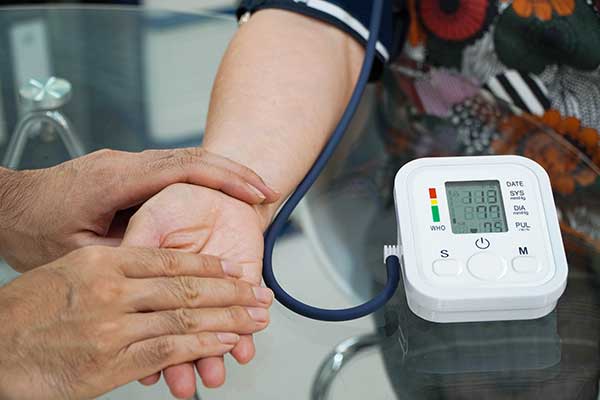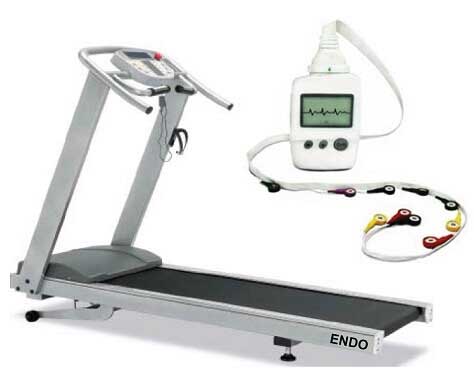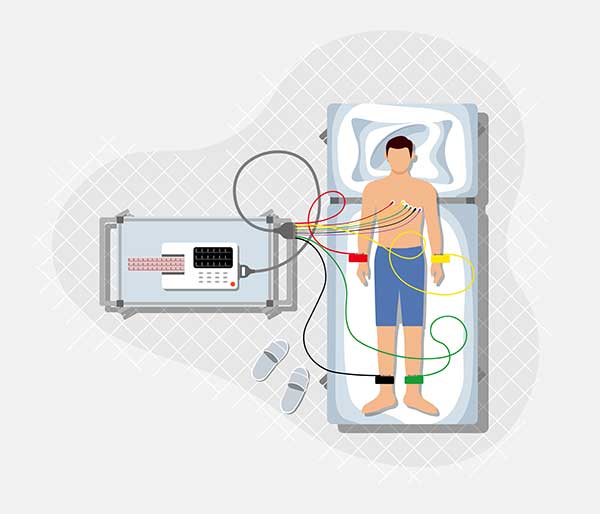CARDIOLOGY
Cardiology is that branch of medicine which deals with the diagnosis and treatment of heart diseases. Cardiologists investigate patients with suspected heart disease by taking a very careful, extensive history of the patient's condition and performing a complete physical examination.
Ambulatory Blood Pressure Monitoring (ABPM)
Ambulatory Blood Pressure Monitoring (ABPM) is when your blood pressure is measured as you move around, living your normal daily life. It is measured for up to 24 hours. A small digital blood pressure monitor is attached to a belt around your waist and connected to a cuff around your upper arm. It is small enough not to affect your normal daily life and you can even sleep with it on. By measuring your blood pressure at regular intervals up to 24 hours, your doctor is able to get a clear idea of how your blood pressure changes throughout the day. Also, because you are able to carry on with your normal routine, it avoids the problems of ‘white coat’ syndrome (where your blood pressure rises because you are feeling anxious about being tested by your doctor or nurse).
- To establish a diagnosis of high blood pressure (hypertension)
- To identify patients who have higher blood pressure readings when in the clinic (known as ‘white coat effect’)
- To help decide if blood pressure medication is required
- To help to decide whether any change to your medication is required
- To further investigate people whose blood pressure is hard to control
- To see how well a patient’s blood pressure medicines are controlling blood pressure throughout the day
- To see what happens to a patient’s blood pressure at night


Echocardiogram (ECHO)
An echocardiogram (echo) is a graphic outline of the heart's movement. During an echo test, ultrasound (high-frequency sound waves) from a hand-held wand placed on your chest provides pictures of the heart's valves and chambers and helps the sonographer evaluate the pumping action of the heart.
The test is used to:
- Assess the overall function of your heart
- Determine the presence of many types of heart disease, such as valve disease, myocardial disease, pericardial disease, infective endocarditis, cardiac masses and congenital heart disease
- Follow the progress of valve disease over time
- Evaluate the effectiveness of your medical or surgical treatments
Electrocadiogram (ECG)
An electrocardiogram is a recording of the small electric waves being generated during heart activity. A normal heart beat is initiated by a small Pulse of electric current. This tiny electric "shock" spreads rapidly in the heart and makes the heart muscle contract. If the whole heart muscle contracted at the same time, there would be no pumping effect. Therefore the electric activity starts at the top of the heart and spreads down, and then up again, causing the heart muscle to contract in an optimal way for pumping blood.

Tread Mill Test (TMT)
An exercise electrocardiogram (EKG or ECG) is a test that checks for changes in your heart while you exercise. Sometimes EKG abnormalities can be seen only during exercise or while symptoms are present. This test is sometimes called a "stress test" or a "treadmill test."

Pulmonary Function Test (PFT)
A pulmonary function test (PFT) evaluates how well your lungs work. PFTs measure the amount of air in your lungs, how well the lungs move air in and out. A respiratory therapist will guide you through each test in a special exam room that has all the lung function measuring devices. Most of the tests are quick, easy and painless, but be sure to tell the therapist if you feel light-headed, tired or uncomfortable. Don't eat a heavy meal right before the test, and avoid caffeinated foods or drinks. Don't smoke or exercise strenuously for six hours before the test. On the day of the test, wear loose clothing that won't restrict your breathing, and wear dentures to the testing if you normally wear them. Finally, just relax, breathe easy and do your best.


Holter Monitoring
Your doctor may recommend a Holter or event monitor if he or she thinks you have anarrhythmia. An arrhythmia is a problem with the rate or rhythm of the heartbeat. Holter and event monitors most often are used to detect arrhythmias in people who have:
- Issues with fainting or feeling dizzy. A monitor might be used if causes other than a heart rhythm problem have been ruled out.
- Palpitations (pal-pih-TA-shuns) that recur with no known cause. Palpitations are feelings that your heart is skipping a beat, fluttering, or beating too hard or fast. You may have these feelings in your chest, throat, or neck.
 No. C-2017-0035
No. C-2017-0035 No. M-0072
No. M-0072